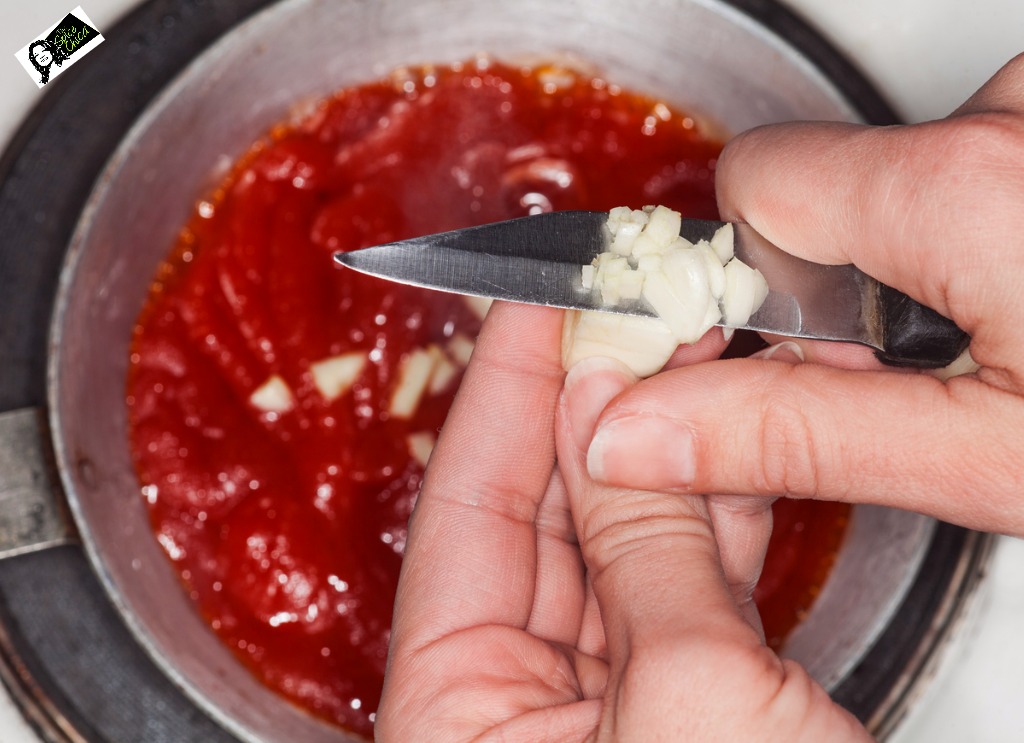“Italians do it better!”…![]() 😀…hey those are Madonna’s t-shirt words.
😀…hey those are Madonna’s t-shirt words.
But really, I learned to make “sugo” (sauce as a little girl from my Nonna.
Anyone who has a nonna knows that in Italian culture, cooking is king. It’s the glue of the family, the center of socializing, and the backbone of … well … being Italian. You could say that about almost any culture—food, after all, is something that plays a pivotal role in the lives of literally every person on Earth.
Ever wonder what the difference is between a Ragu’ and Sauce? You might think that they are one and the same since they all go with pasta.
“Sugo” or sauce is a general term that indicates a fluid sauce. It can be a simple tomato sauce like a marinara or can include whole plum tomatoes and some other ingredients, cut small.
A ragu’ is a thick, chunky sauce usually made by cooking several kinds of meat in a sauce, usually tomato. That said, a ragu’ can also made with seafood, vegetables or a combination of these.
A Bolognese ragu’ is made with ground meat cooked with vegetables and a small amount of concentrated tomato, added for color. The Bolognese ragu’ is served with tagliatelle pasta. The Napoletan ragu’ has lots of onions and a big chuck of beef that cooks in the tomatoes for many hours. You are supposed to serve the beef flavored sauce with spaghetti or linguine pasta and serve the meat as a second course. Still the “sauce” is considered a ragu’. The Pugliese ragu’ includes several types of meats including ribs, porkchops and beef. The “sauce” is served with orecchiette pasta while the meats are served as a second course. And again, the “sauce” is considered a ragu’.
For the RAGU sauce:
- 1 kg (2lbs) hanger or skirt steak (make sure to have it coarsely minced by a butcher so that the meat doesn’t lose its shape during the long cooking time)
- 100 g (3.5 oz) fresh, unsmoked pancetta (OPTIONAL – finely chopped)
- soffritto (mixture of two onions, 2 carrots, and 3 sticks of celery, chopped very finely so you can taste but not see it)
- 200 ml (7 fl oz) red wine (optional)
- 150 g (5.5 oz) tomato puree
- half a nutmeg (grated)
- salt and pepper
- Parmesan (to serve)
INSTRUCTIONS: Gently fry the finely chopped onions, carrots, and celery in olive oil and add in the finely chopped pancetta, until slightly browned. Now add the steak. Stir gently and cook until browned, then cover the pan with a lid and let the mixture braise gently for 40 minutes. Add the red wine and again let the mixture simmer gently until the liquid has evaporated. Now stir in the salt, pepper, and freshly grated nutmeg. Add the tomato puree and enough water to cover the sauce plus about 2.5 cm (1 inch) extra. Now half-cover the pan and simmer the sauce very gently (a bare simmer) for two hours, checking and stirring every so often. By the end, the sauce will have absorbed the liquid, leaving a fully flavored ragu. Check and adjust the seasoning. Serve the ragu over the pasta with freshly grated Parmesan.


